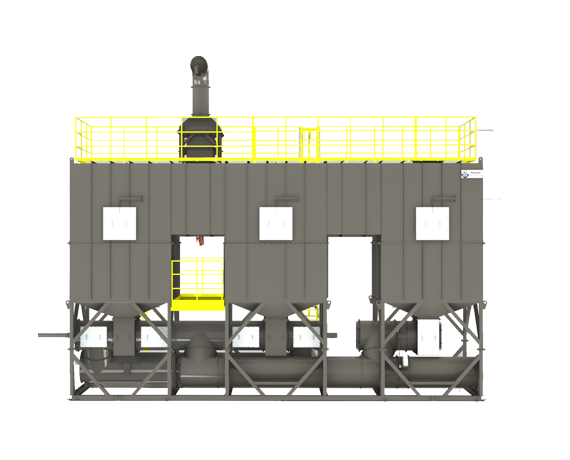The construction of treatment facilities, process type, processing capacity, operating time, operating parameters, replacement of consumables or chemicals, energy consumption, and secondary pollution such as waste filter cotton, waste catalyst, waste adsorbent, waste absorbent, waste organic solvent, etc. Check the standardized disposal of VOCs and establish a list of VOCs treatment facilities; check and detect the VOCs emission concentration, emission rate and removal efficiency of treatment facilities.
Q3: Governance Requirements
For new treatment facilities or renovation of existing treatment facilities, the treatment technology should be reasonably selected according to the characteristics of exhaust gas, VOCs composition and concentration, production conditions, etc. In addition to odor control, generally do not use low-temperature plasma, photocatalysis, photooxidation and other technologies.
Strengthen the operation and maintenance management, so that the treatment facilities "start first and then stop" compared with the production equipment. The production equipment can be started only after the treatment facilities reach the normal operating conditions, and the production equipment can be stopped after the production equipment is stopped and the residual VOCs waste gas is collected and treated. facilities; clean up and replace adsorbents, absorbents, catalysts, heat accumulators, filter cottons, lamps, electrical components and other treatment facilities consumables in a timely manner to ensure stable and efficient operation of the facilities; do a good job in the start-up and downtime of production equipment and treatment facilities, inspection Ledger records such as maintenance, maintenance and replacement of consumables for treatment facilities, and disposal; waste filter cotton, waste catalysts, waste adsorbents, waste absorbents, waste organic solvents, etc. generated by VOCs treatment facilities should be cleared and transported in time, which are hazardous wastes should be handed over to qualified units for disposal.
Enterprises adopting the activated carbon adsorption process should design purification processes and equipment according to the characteristics of exhaust gas emissions and relevant engineering technical specifications, so that the exhaust gas has sufficient residence time in the adsorption device, select activated carbon that meets the relevant product quality standards, and fully fill, Replace in time. When granular activated carbon is used as adsorbent, its iodine value should not be lower than 800mg/g; when honeycomb activated carbon is used as adsorbent, its iodine value should not be lower than 650mg/g; when activated carbon fiber is used as adsorbent, its specific surface area should not be lower than 1100㎡/g (BET method). The one-time activated carbon adsorption process should use granular activated carbon as the adsorbent. Activated carbon and activated carbon fiber products should be provided with product quality certification materials when they are sold.
Enterprises adopting the catalytic combustion process should use qualified catalysts and add them in full. The design space velocity of the catalyst bed should be lower than 40000h-1. If a discontinuous adsorption and desorption treatment process is adopted, the adsorbed VOCs should be desorbed in time according to the design requirements, and the desorbed gas should be discharged up to the standard after being treated by an efficient treatment process. The combustion temperature of the regenerative combustion device (RTO) is generally not lower than 760 °C, and the combustion temperature of the catalytic combustion device (CO) is generally not lower than 300 °C. The relevant temperature parameters should be automatically recorded and stored.
Conditional industrial parks and enterprise clusters are encouraged to build centralized coating centers, centralized activated carbon regeneration centers in decentralized adsorption and centralized desorption modes, solvent recovery centers and other VOCs-related "Green Island" projects to achieve centralized and efficient VOCs treatment.


